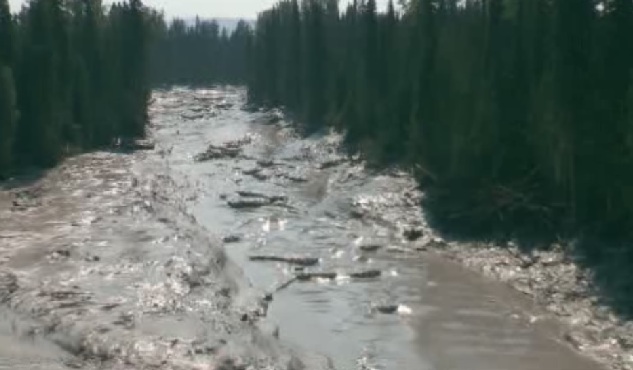B.C.’s environment ministry is providing the results of initial water quality tests in the wake of a massive tailings pond breach that sent five million cubic metres of mine waste roaring through the Cariboo Region.

The hope is to provide a modicum of certainty for residents whose lives have been overturned by a state of emergency and the ecologists fearful of its impact on spawning salmon: Just how toxic is this water?
READ MORE: Former Mount Polley mine employee speaks out
Imperial Metals President Brian Kynoch courted scorn earlier this week when he called the water “very close” to drinkable, and safe for fish.
Whether or not that’s the case, Thursday’s tests of water from Quesnel Lake won’t touch the mess of sludge that poured out of that pond Monday morning. It’s still too dangerous to test Hazeltine Creek, for fear of more tailings waste breaching the impoundment area.
And while what’s in the water will have the most effect in the short term, and a high pH level will slow most metals’ leaching into it, in the long term those suspended solids will have the biggest impact. If they aren’t cleaned up – tough to do given that officials still don’t know how far the sludge travelled or where it went – they’ll weather and wear into the environment. And that could pose problems.
READ MORE: What’s in Imperial Metals’ Mount Polley tailings, and should you be worried?
According to Imperial Metals’ filings with Environment Canada last year, substances it disposed on-site in the tailings pond included phosphorous, manganese, lead and mercury.
- Life in the forest: How Stanley Park’s longest resident survived a changing landscape
- ‘They knew’: Victims of sexual abuse by Ontario youth leader sue Anglican Church
- Carbon rebate labelling in bank deposits fuelling confusion, minister says
- Buzz kill? Gen Z less interested in coffee than older Canadians, survey shows
The company has until Aug. 15 to provide a more complete assessment of the spill’s impact.
PHOTOS: Before and after the Mount Polley breach
Substances listed as disposed “on-site” in Imperial Metals’ 2013 Mount Polley Mine report (Note: We still don’t know how mobile these solids were, how much was in water, and how much spilled as solids in Monday’s massive breach)
- Phosphorus – 41,640 tonnes
- Manganese – 20,988 tonnes
- Copper – 18,413 tonnes
- Vanadium – 5,047 tonnes
- Zinc – 2,169 tonnes
- Cobalt – 475 tonnes
- Nickel – 326 tonnes
- Antimony – 14 tonnes
- Arsenic – 406,122 kg
- Lead – 177,041 kg
- Selenium – 46,136 kg
- Cadmium – 6,487 kg
- Mercury – 3,114 kg




Comments